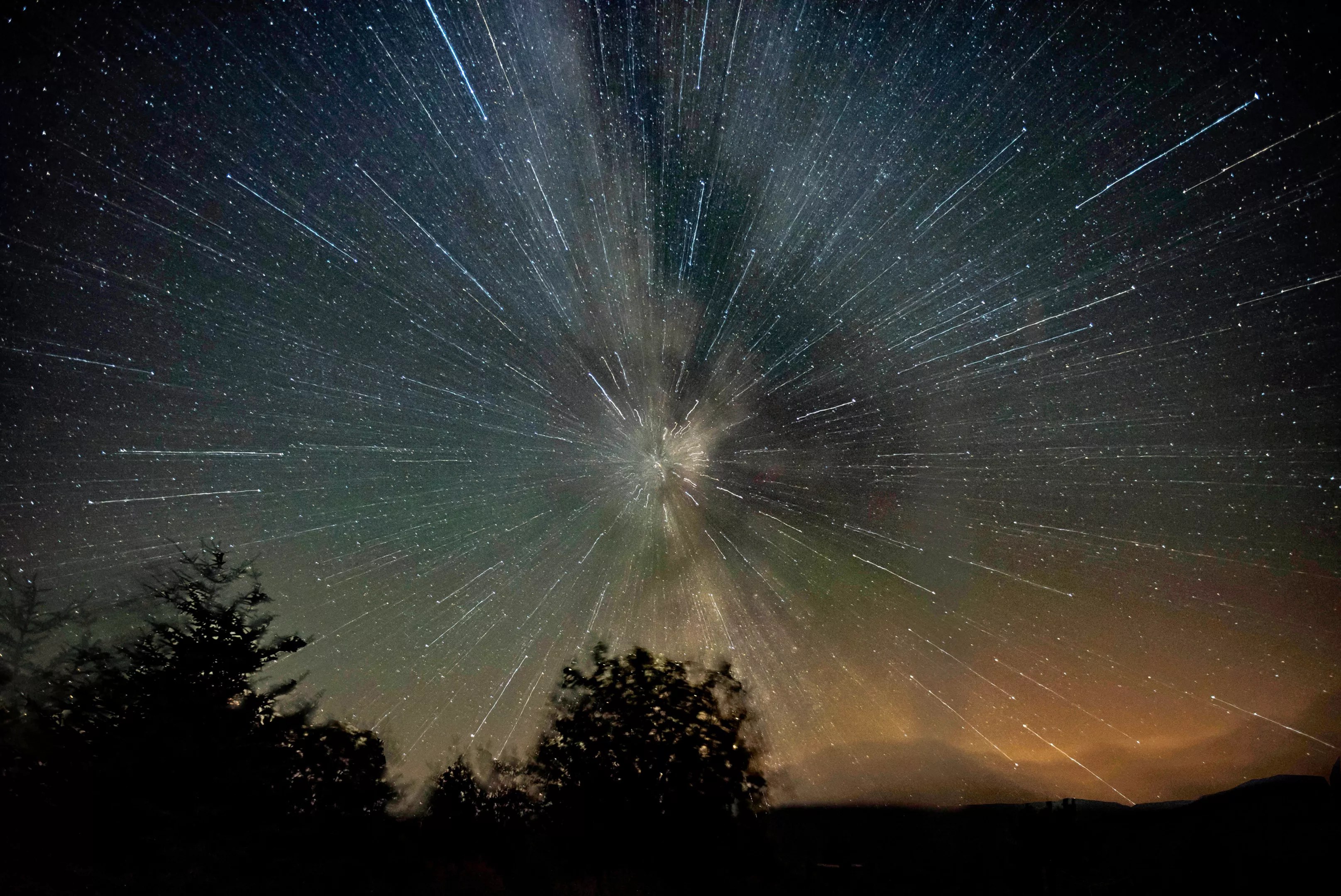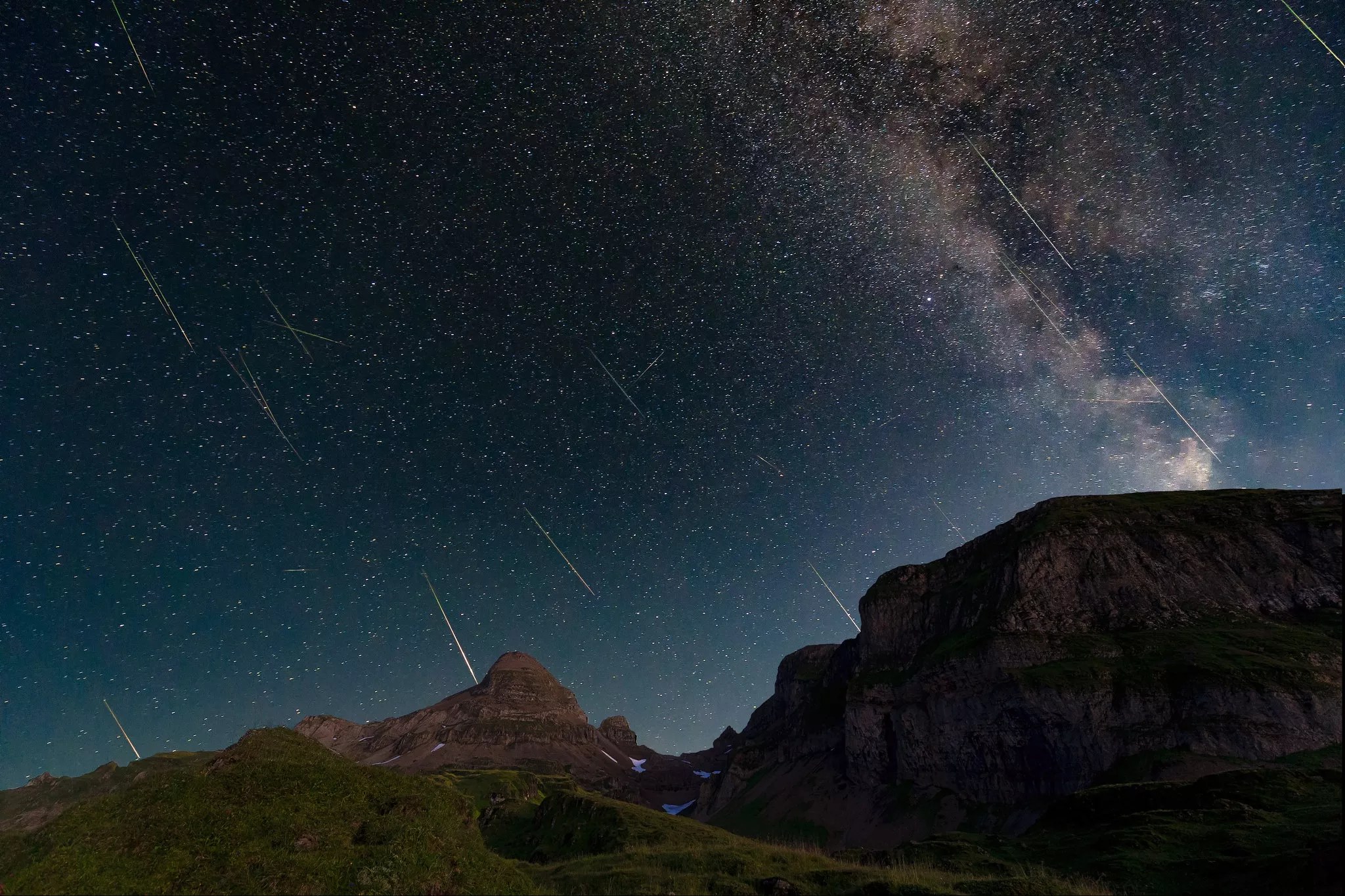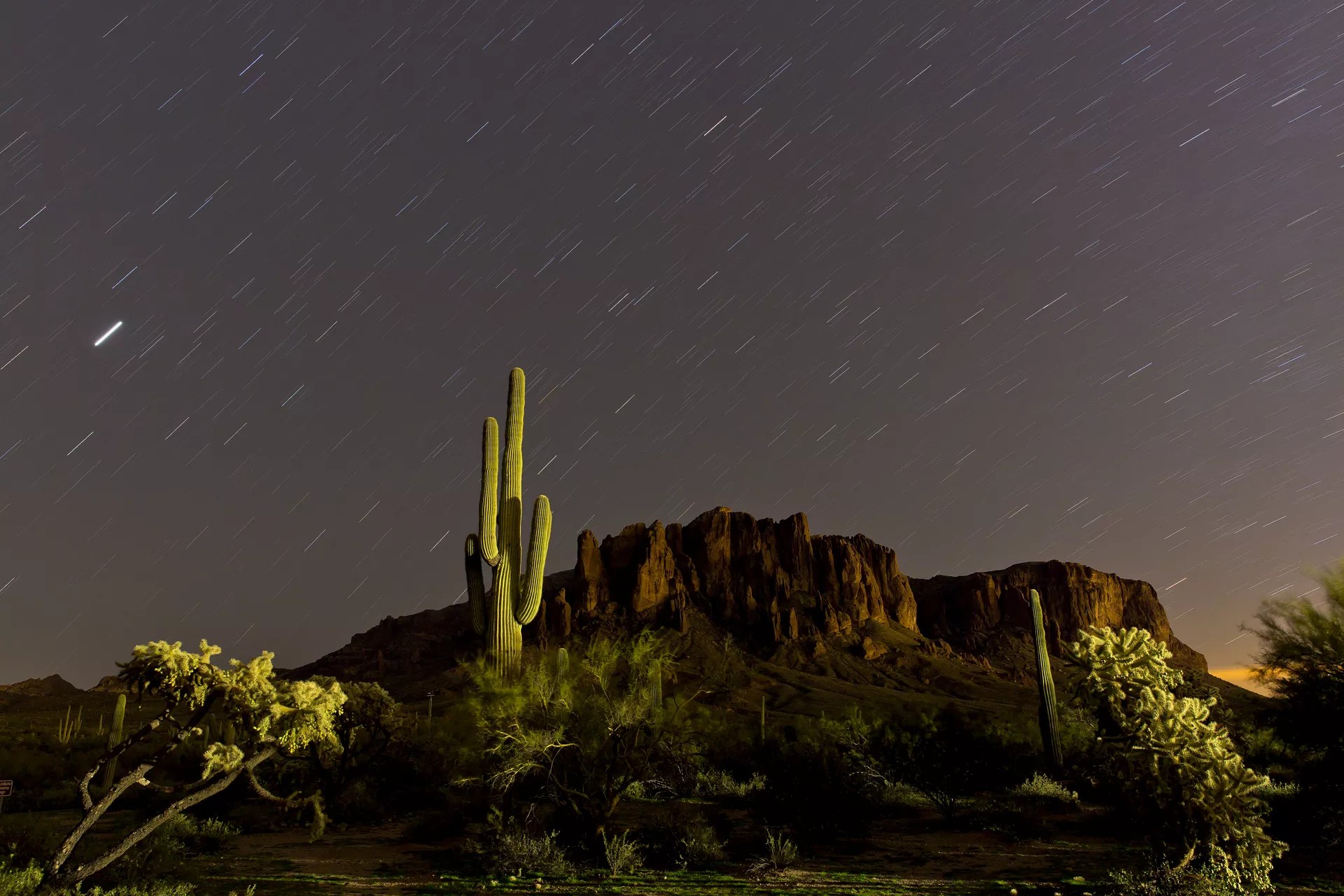
Trinity Mirror/Mirrorpix/Alamy

Audio By Carbonatix
Skywatchers in Arizona, the moment you’ve waited all year for is here. The biggest meteor shower of 2025 is reaching an epic climax this week, sending dozens of shooting stars streaking across the night sky.
The Perseid meteor shower peaks on Tuesday night into Wednesday morning and will put on a light show of shooting stars zooming through the night sky. The yearly celestial spectacle, which occurs every August, is known for causing 60 to 100 meteors per hour under ideal viewing conditions.
Unfortunately, this year’s Perseids is being upstaged. The bright light from the moon, currently in its waning gibbous phase, may wash out many of the fainter meteors.
That being said, its still possible to see a larger than normal amount of burning fireballs zooming across the sky. What time is the meteor shower tonight? Here’s when to see the Perseid meteor shower in Arizona.
This year, make your gift count –
Invest in local news that matters.
Our work is funded by readers like you who make voluntary gifts because they value our work and want to see it continue. Make a contribution today to help us reach our $30,000 goal!

A time-lapse photo of the Perseid meteor shower in 2016.
What causes the Perseid meteor shower?
The Perseid meteor shower is the result of the Earth traveling through the ice, rocks and other debris shed by Comet Swift-Tuttle. These tiny bits on interstellar matter will burn up in our atmosphere as our planet passes through the detritus each year.
Why is called the Perseids?
The Perseids get its name from the fact its shooting stars seem to originate near the constellation Perseus, which is the meteor shower’s radiant point.
When is the Perseid meteor shower?
The Perseid meteor shower occurs nightly through late August.
When is the peak of the Perseid meteor shower?
The Perseid meteor shower will peak on Tuesday, Aug. 12 into the early hours or Wednesday, Aug. 13.
What’s the best time to see the Perseid meteor shower tonight?
The best time to catch the Perseids is typically between midnight and dawn, under ideal circumstances. Thanks to the amount of light coming from the moon, which will be 84% full during the peak of the Perseid meteor shower, seeing a number of the shooting stars will be hampered. Astronomers suggest watching in the pre-dawn hours when moonlight won’t be as bright.
Bottom line: You’ll still guaranteed to see meteors, just not as many as during a moon-free year.
Where in the sky can you see the Perseid meteor shower?
You’ll want to look north in the direction of Perseus, which will rise in the sky after midnight.
What kind of meteors will I see during the Perseids?
The Perseid meteor shower causes a series of fast, bright shooting stars zipping across the night sky. Some will even leave glowing trails that take a few second to burn up.
How many meteors will I see during the Perseids?
There’s a reason why the Perseid meteor shower in widely considered to be the biggest and most active of the year. Between 60 to 100 meteors light up the sky during the peak of the Perseids under ideal conditions. That being said… Lost Dutchman State Park east of Phoenix is a good spot to see the Perseids. Arizona State Parks
Where can I see the Perseid meteor shower in Arizona?
Essentially, anywhere with open skies that’s as dark as possible and far from city lights. You’ll want to head to the outskirts of metro areas like Phoenix or Tucson. Another option is the Estrella Star Tower, 8175 S. Hillside Drive in Goodyear, or any of the following local parks that near the edges of the Valley:
- Lost Dutchman State Park, 6109 N. Apache Trail, Apache Junction
- Park Meadows Park, 20611 W. Carlton Manor, Buckeye
- Thunderbird Conservation Park 22800 N. 59th Ave., Glendale
- South Lake Park, 11111 San Miguel, Goodyear
- Pecos Park, 17010 S. 48th St., Phoenix
The following Arizona cities and towns are also official International Dark Sky communities and allow for optimal skywatching experiences:
- Bisbee
- Camp Verde
- Cottonwood.
- Flagstaff
- Fountain Hills
- Oak Creek
- Sedona
What will Perseid viewing conditions be like in Arizona?
As we said, viewing conditions will be a little dodgy this year due to all the moonlight. There’s always the possibility of a summer storm blocking your view, even though the monsoon has been a non-factor this year.
What are some other tips?
Bring a chair or blanket to see as much of the sky as you can. It also helps to stow your phones for 15 to 30 minutes to permit your eyes to adjust to the dark.